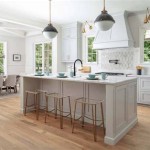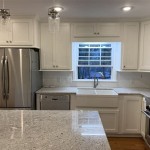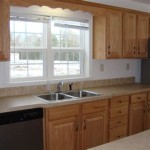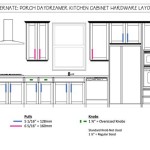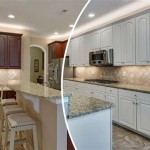Kitchen Cupboard Hinges: The Soft-Closing Revolution
Kitchen cupboards, essential elements in any culinary space, have undergone significant evolution over the years. Beyond aesthetics and storage capacity, functionality and user experience have become paramount. One crucial component that significantly impacts both is the hinge. Specifically, soft-closing hinges have revolutionized the way we interact with our kitchen cupboards, offering a blend of convenience, durability, and noise reduction. This article explores the features, benefits, types, installation, and maintenance of soft-closing kitchen cupboard hinges, providing a comprehensive understanding of this essential hardware.
Defining Soft-Closing Hinges
Soft-closing hinges, also known as soft-close or self-closing hinges, are designed to prevent cabinet doors from slamming shut. Unlike traditional hinges, which rely solely on mechanical movement and can result in abrupt closures, soft-closing hinges incorporate a damping mechanism. This mechanism, typically hydraulic or pneumatic, slows down the motion of the door in the final inches of its closing arc. As the door approaches the cabinet frame, the damping system engages, gently and silently pulling the door closed. This controlled closure prevents damage to the cabinet frame, reduces noise pollution, and enhances the overall user experience.
Key Benefits of Soft-Closing Hinges
The adoption of soft-closing hinges in kitchen design has become increasingly prevalent due to their numerous advantages. These benefits extend beyond mere convenience, offering long-term value and improving the functionality of the kitchen space.
Reduced Noise: One of the most immediately noticeable benefits of soft-closing hinges is the significant reduction in noise. The elimination of slamming doors creates a quieter and more peaceful kitchen environment. This is particularly beneficial in open-plan living spaces where kitchen noise can easily disrupt other activities. Homes with young children or those who frequently cook early in the morning or late at night greatly appreciate this feature.
Enhanced Durability: The gentle closing action of soft-closing hinges minimizes the impact force on both the cabinet door and the frame. This reduced stress translates to increased longevity for the cabinetry. By preventing the jarring and vibrations associated with slamming doors, soft-closing hinges help to protect the structural integrity of the cupboard, preventing loosening of joints, cracking of finishes, and premature wear and tear. Cabinet doors also experience less stress on the screw holes, reducing stripping and the need for frequent repairs.
Improved Safety: Soft-closing hinges enhance safety, particularly for households with children or pets. The slow and controlled closing action reduces the risk of pinched fingers and other injuries. Even if a child attempts to force a door closed, the damping mechanism will prevent it from slamming shut forcefully, minimizing the potential for harm. This feature provides an added layer of security and peace of mind for families.
Increased Convenience: The effortless closing action of soft-closing hinges adds a touch of luxury and convenience to the kitchen experience. Users no longer need to consciously control the speed of the door closure. Simply push the door towards the frame, and the soft-closing mechanism takes over, ensuring a smooth and silent close. This frees up hands and simplifies kitchen tasks, making it a small but significant improvement to daily routines.
Enhanced Aesthetic Appeal: While primarily functional, soft-closing hinges contribute to the overall aesthetic appeal of the kitchen. The smooth and controlled closing action conveys a sense of quality and sophistication. Furthermore, the absence of slamming doors helps to maintain the pristine condition of the cabinetry, preserving its beauty and value for years to come.
Types of Soft-Closing Hinges
Soft-closing hinges are available in a variety of configurations to suit different cabinet styles and installation requirements. Understanding the different types is crucial for selecting the appropriate hinge for a specific application. The most common types include:
Overlay Hinges: Overlay hinges are designed for cabinet doors that partially or fully cover the cabinet frame. The amount of overlay refers to the distance the door extends beyond the frame. These hinges are typically used in frameless or European-style cabinets where the doors are flush with the front of the cabinet.
Inset Hinges: Inset hinges are used for cabinet doors that are set inside the cabinet frame, creating a recessed appearance. These hinges are commonly found in traditional cabinet designs. Inset hinges often require a more precise installation to ensure the door sits flush with the frame.
Face Frame Hinges: Face frame hinges are specifically designed for cabinets with a face frame, which is a wooden frame attached to the front of the cabinet box. These hinges typically attach to the face frame and the inside of the cabinet door. Face frame hinges are available in both overlay and inset configurations.
Concealed Hinges: Concealed hinges, also known as European hinges or cup hinges, are hidden from view when the cabinet door is closed. These hinges are installed inside a pre-drilled cup in the cabinet door and attach to a mounting plate inside the cabinet frame. Concealed hinges offer a clean and modern aesthetic and are commonly used with overlay and inset doors.
Compact Hinges: Compact hinges are smaller and more discreet than other hinge types. They are often used in smaller cabinets or where space is limited. Compact hinges can also be used for frameless and face frame cabinets, offering versatility in installation.
Within each of these categories, there are further variations in hinge design, including different opening angles, adjustable features, and weight capacities. Selecting the appropriate hinge type depends on the cabinet style, door dimensions, and desired aesthetic.
Installation of Soft-Closing Hinges
The installation of soft-closing hinges can vary depending on the type of hinge and the construction of the cabinet. However, the general process remains consistent. Proper installation is crucial to ensure the hinges function correctly and provide the desired soft-closing action. Here is a general overview of the installation process:
Preparation: Before starting the installation, gather the necessary tools and materials. This includes the soft-closing hinges, screws, a screwdriver (both manual and powered), a drill, a measuring tape, a pencil, and potentially a hinge jig or template. Identify the type of hinge being installed and ensure compatibility with the cabinet and door.
Marking and Drilling: Use a measuring tape and pencil to accurately mark the locations for the hinge placement on both the cabinet door and the cabinet frame or inside the cabinet. If using concealed hinges, use a drill with a Forstner bit to create the recess for the hinge cup in the cabinet door. A hinge jig or template can be helpful for ensuring accurate and consistent hole placement.
Attaching the Hinges: Position the hinges on the marked locations and secure them using the provided screws. Start by hand-tightening the screws to prevent stripping the screw holes, then use a screwdriver or drill to fully tighten them. Ensure the hinges are properly aligned and flush with the surface of the door and frame.
Mounting Plates (For Concealed Hinges): If using concealed hinges, attach the mounting plates to the inside of the cabinet frame using screws. Ensure the mounting plates are aligned with the hinges on the cabinet door.
Adjustments: Most soft-closing hinges are adjustable, allowing for fine-tuning of the door alignment and closing speed. Use the adjustment screws on the hinge to adjust the door's position horizontally, vertically, and in depth. Adjust the closing speed by turning the damping adjustment screw, if available. Test the door closure and make any necessary adjustments until the door closes smoothly and silently.
Testing: After installation and adjustments, thoroughly test the operation of the door. Open and close the door several times to ensure the soft-closing mechanism is functioning correctly. Check for any binding or rubbing and make any necessary adjustments. If the door does not close properly, re-check the alignment of the hinges and mounting plates.
It is recommended to consult the manufacturer's instructions for specific installation guidelines for the particular hinge model being used. Professional installation is advised if you are uncomfortable with DIY projects or require a precise fit.
Maintenance of Soft-Closing Hinges
While soft-closing hinges are generally durable and require minimal maintenance, proper care can extend their lifespan and ensure optimal performance. Regular cleaning and lubrication are the key elements of a successful maintenance routine.
Cleaning: Periodically clean the hinges to remove dust, dirt, and debris that can accumulate over time. Use a soft cloth or brush to gently wipe the hinges. Avoid using harsh chemicals or abrasive cleaners, as these can damage the hinge finish or the damping mechanism. For stubborn dirt, a mild soap and water solution can be used. Ensure the hinges are thoroughly dried after cleaning.
Lubrication: Lubricate the moving parts of the hinges to ensure smooth and silent operation. Use a silicone-based lubricant or a specialized hinge lubricant. Apply a small amount of lubricant to the pivot points and other moving parts. Avoid using oil-based lubricants, as these can attract dust and dirt, leading to premature wear. Wipe away any excess lubricant with a clean cloth.
Inspection: Regularly inspect the hinges for signs of wear or damage. Check for loose screws, damaged hinges, or a loss of damping efficiency. If any issues are detected, address them promptly to prevent further damage. Tighten any loose screws or replace damaged hinges as needed. If the damping mechanism is no longer functioning properly, the hinge may need to be replaced.
Weight Capacity: Be mindful of the weight capacity of the hinges. Overloading the hinges can lead to premature wear and failure. If using heavy cabinet doors, select hinges with a higher weight capacity. Consider adding additional hinges for heavier doors to distribute the weight more evenly.
By following these maintenance tips, you can ensure that your soft-closing hinges provide years of reliable and trouble-free service.

Cabinet Hinges Soft Close Kitchen Door Goldenwarm

Touch Cabinet Hinges 10 Pairs 20 Pcs Face Frame Cupboard Door Soft Close 1 4 Inch Overlay Concealed Compact For Kitchen

50 Pack Silver 1 2 In Overlay Cabinet Hinges Soft Close Door Hinge With Driver For Kitchen

Kitchen Cabinet Hinges Self Closing Door Cupboard Hinge 1 2 Overlay 3 8 Inset

Parisrhône 6 Pack 1 2 Inch Overlay Soft Close Cabinet Hinges For Kitchen Cabinets Door Concealed Self Closing Face Frame Brushed

2 Piece Clip On Soft Close Hinges 105 Degree Self Closing Frameless With Mounting Plates Full Overlay Premium Included S 1 Pair 00mm Kitchen

Lot Soft Closing Hinge Compact 1 4 Overlay 105 Kitchen Cabinet Hardware Us

Strong Metal Full Overlay 35mm Soft Close Hinges Kitchen Cabinet Cupboard Door

Cabinet Hinges 4 Pcs 175 Degree Soft Close With Hydraulic Buffer Large Angle Kitchen Door Frameless Adjustable

Homdiy Soft Close Cabinet Hinges Suitable For Kitchen Cabinets Door Homdiyhardware
Related Posts

